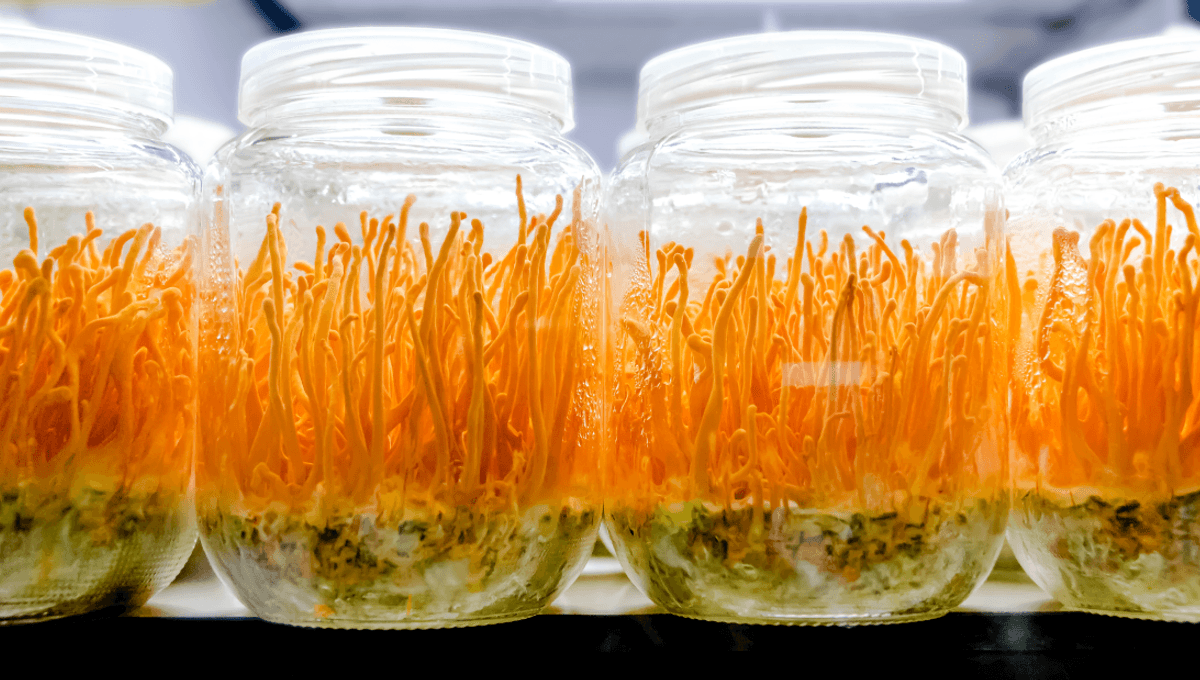
Shhh… do you hear it? The gentle strumming of Joel’s guitar? It can mean only one thing: The Last Of Us is back, and this time it’s more contagious than ever. The hit HBO series, inspired by the game of the same name that made Cordyceps mainstream, has teased a fleeting but powerful adaptation to its portrayal of this very real fungus. Scariest of all, it’s an ability inspired by scientific reality.
In the first series, the Cordyceps fungus (inspired by Ophiocordyceps unilateralis) was depicted growing tentacles to spread (who could forget Tess’s horrendous “tendrils kiss”). This would actually be much easier to deal with than what Cordyceps really does when it’s time to find a new host because, like many other fungi, it fires out great clouds of airborne spores.
So, good luck, Joel and Ellie. You’re going to need it.
“Fungi love to make spores,” Dr Jim Kronstad, professor and microbiologist at the University of British Columbia’s Michael Smith Laboratories and author of a new paper on fungal threats, said in a statement – and he ain’t wrong. Cordyceps, however, does it with real flair.
After infecting its host, let’s say an ant, it influences its behavior, leading that ant to march itself high up on a branch where it’ll sink in its mandibles for a better grip. From this optimal position, the fungus then erupts out of the unfortunate ant’s head, spreading its spores far and wide so that they can infect another host. The ants themselves appear to be aware of the danger, shifting any strangely behaving individuals far away from the colony.
Cordyceps can’t infect humans, fortunately, as they’re actually species-specific. That means one ant won’t be vulnerable to the same Cordyceps as another species of ant, and we therefore don’t need to worry that a zombie fungus is going make the leap to humans just yet. But as for other fungal threats? It’s getting more complicated as our world gets warmer.
Fungal infections don’t tend to spread from person to person. Instead, they’re something we typically pick up from the environment as spores enter our bodies through a wound or by getting into our airway.
There are many fungal diseases that begin with airborne spores including Cryptococcus neoformans, which landed a spot on the World Health Organization’s “critical priority pathogens” list. It’s found throughout the natural world, but is especially common in bird poop, and can lead to a kind of meningitis that’s fatal if left untreated.
Another element of realism within the show is the suggestion that fungal pathogens could evolve to become more dangerous to humans on a warming planet. Kronstad and colleagues highlight this threat in a recent paper that examines the fungal threats facing modern civilization and investigate opportunities to use fungi to combat these threats.
These threats include familiar faces like Coccidioides, the pathogen behind valley fever, and Candida auris, a common hospital infection that doesn’t respond to existing antifungal treatments. Then we have new threats to consider, like Rhodosporidiobolus fluvialis, a pathogen that was discovered in humans for the first time only last year.
Fungus isn’t, however, the enemy. It provides vital ecosystem services that keep a healthy planet ticking on, and we as a species have found innumerable ways to harness it to our benefit – but as the rapidly changing climate paints an uncertain future, we need to keep an eye on what’s going on with fungi lurking beneath the surface.
“Humans and fungi have an intricate relationship that reverberates across the planet,” wrote the authors. “Understanding the full implications of this relationship for the biosphere will require a deep exploration of the fungal kingdom, involving multidisciplinary approaches that include basic science, epidemiology and molecular taxonomy. Given the ongoing impacts of global warming, which will bring about rapid changes in fungal-host ecology, this effort is of great importance.”
The paper is published in the journal Nature.
Source Link: Killer Fungus In “The Last Of Us” Gets A Deadly Upgrade Inspired By Real Life